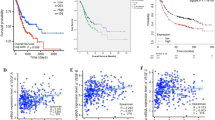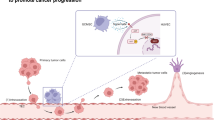Abstract
Slit2, a secreted glycoprotein, is down-regulated in many cancers. Slit2/Robo signaling pathway plays an important, but controversial, role in angiogenesis. We identified splicing variants of Slit2 at exon 15, Slit2-WT and Slit2-ΔE15, with differential effects on proliferation and invasive capability of lung cancer cells. The aim of this study was to elucidate the differential roles of these exon 15 splicing variants in angiogenesis. Our results revealed that both Slit2-WT and Slit2-ΔE15 inhibit motility of human umbilical vein endothelial cells (HUVECs). The conditioned medium (CM) collected from CL1-5/VC or CL1-5/Slit2-WT lung adenocarcinoma cells blocked HUVEC tube formation and angiogenesis on chorioallantoic membrane (CAM) assay when compared with untreated HUVECs and CAM, respectively. However, CM of CL1-5/Slit2-ΔE15 restored the quality of tubes and the size of vessels. Although both Slit2-WT and Slit2-ΔE15 inhibited permeability induced by CM of cancer cells, Slit2-ΔE15 exhibited stronger effect. These results suggested that Slit2-ΔE15 plays important roles in normalization of blood vessels by enhancing tube quality and tightening endothelial cells, while Slit2-WT only enhances tightening of endothelial cells. It appears that Robo4 is responsible for Slit2 isoform-mediated inhibition of permeability, while neither Robo1 nor Robo4 is required for Slit2-ΔE15-enhanced tube quality. The results of this study suggest that Slit2-ΔE15 splicing form is a promising molecule for normalizing blood vessels around a tumor, which, in turn, may increase efficacy of chemotherapy and radiotherapy.








Similar content being viewed by others
References
Hanahan D, Weinberg RA (2011) Hallmarks of cancer: the next generation. Cell 144(5):646–674
Jayson GC, Hicklin DJ, Ellis LM (2012) Antiangiogenic therapy—evolving view based on clinical trial results. Nat Rev Clin Oncol 9(5):297–303
Carmeliet P, Jain RK (2011) Molecular mechanisms and clinical applications of angiogenesis. Nature 473(7347):298–307
Bergers G, Hanahan D (2008) Modes of resistance to anti-angiogenic therapy. Nat Rev 8(8):592–603
Jain RK (2005) Normalization of tumor vasculature: an emerging concept in antiangiogenic therapy. Science 307(5706):58–62
Dallol A, Da Silva NF, Viacava P, Minna JD, Bieche I, Maher ER, Latif F (2002) SLIT2, a human homologue of the Drosophila Slit2 gene, has tumor suppressor activity and is frequently inactivated in lung and breast cancers. Cancer Res 62(20):5874–5880
Dallol A, Morton D, Maher ER, Latif F (2003) SLIT2 axon guidance molecule is frequently inactivated in colorectal cancer and suppresses growth of colorectal carcinoma cells. Cancer Res 63(5):1054–1058
Kim HK, Zhang H, Li H, Wu TT, Swisher S, He D, Wu L, Xu J, Elmets CA, Athar M, Xu XC, Xu H (2008) Slit2 inhibits growth and metastasis of fibrosarcoma and squamous cell carcinoma. Neoplasia 10(12):1411–1420
Mertsch S, Schmitz N, Jeibmann A, Geng JG, Paulus W, Senner V (2008) Slit2 involvement in glioma cell migration is mediated by Robo1 receptor. J Neurooncol 87(1):1–7
Werbowetski-Ogilvie TE, Seyed Sadr M, Jabado N, Angers-Loustau A, Agar NY, Wu J, Bjerkvig R, Antel JP, Faury D, Rao Y, Del Maestro RF (2006) Inhibition of medulloblastoma cell invasion by slit. Oncogene 25(37):5103–5112
Yiin JJ, Hu B, Jarzynka MJ, Feng H, Liu KW, Wu JY, Ma HI, Cheng SY (2009) Slit2 inhibits glioma cell invasion in the brain by suppression of Cdc42 activity. Neuro-oncology 11(6):779–789
Kaur S, Castellone MD, Bedell VM, Konar M, Gutkind JS, Ramchandran R (2006) Robo4 signaling in endothelial cells implies attraction guidance mechanisms. J Biol Chem 281(16):11347–11356
Kaur S, Samant GV, Pramanik K, Loscombe PW, Pendrak ML, Roberts DD, Ramchandran R (2008) Silencing of directional migration in roundabout4 knockdown endothelial cells. BMC Cell Biol 9:61
Sheldon H, Andre M, Legg JA, Heal P, Herbert JM, Sainson R, Sharma AS, Kitajewski JK, Heath VL, Bicknell R (2009) Active involvement of Robo1 and Robo4 in filopodia formation and endothelial cell motility mediated via WASP and other actin nucleation-promoting factors. Faseb J 23(2):513–522
Urbich C, Rossig L, Kaluza D, Potente M, Boeckel JN, Knau A, Diehl F, Geng JG, Hofmann WK, Zeiher AM, Dimmeler S (2009) HDAC5 is a repressor of angiogenesis and determines the angiogenic gene expression pattern of endothelial cells. Blood 113(22):5669–5679
Yang XM, Han HX, Sui F, Dai YM, Chen M, Geng JG (2010) Slit–Robo signaling mediates lymphangiogenesis and promotes tumor lymphatic metastasis. Biochem Biophys Res Commun 396(2):571–577
Han X, Zhang MC (2010) Potential anti-angiogenic role of Slit2 in corneal neovascularization. Exp Eye Res 90(6):742–749
Liu D, Hou J, Hu X, Wang X, Xiao Y, Mou Y, De Leon H (2006) Neuronal chemorepellent Slit2 inhibits vascular smooth muscle cell migration by suppressing small GTPase Rac1 activation. Circ Res 98(4):480–489
Park KW, Morrison CM, Sorensen LK, Jones CA, Rao Y, Chien CB, Wu JY, Urness LD, Li DY (2003) Robo4 is a vascular-specific receptor that inhibits endothelial migration. Dev Biol 261(1):251–267
Howitt JA, Clout NJ, Hohenester E (2004) Binding site for Robo receptors revealed by dissection of the leucine-rich repeat region of Slit. EMBO J 23(22):4406–4412
Liu Z, Patel K, Schmidt H, Andrews W, Pini A, Sundaresan V (2004) Extracellular Ig domains 1 and 2 of Robo are important for ligand (Slit) binding. Mol Cell Neurosci 26(2):232–240
Morlot C, Hemrika W, Romijn RA, Gros P, Cusack S, McCarthy AA (2007) Production of Slit2 LRR domains in mammalian cells for structural studies and the structure of human Slit2 domain 3. Acta Crystallogr A 63(Pt 9):961–968
Lin YY, Yang CH, Sheu GT, Huang CY, Wu YC, Chuang SM, Fann MJ, Chang H, Lee H, Chang JT (2011) A novel exon 15-deleted, splicing variant of Slit2 shows potential for growth inhibition in addition to invasion inhibition in lung cancer. Cancer 117(15):3404–3415
Jones CA, London NR, Chen H, Park KW, Sauvaget D, Stockton RA, Wythe JD, Suh W, Larrieu-Lahargue F, Mukouyama YS, Lindblom P, Seth P, Frias A, Nishiya N, Ginsberg MH, Gerhardt H, Zhang K, Li DY (2008) Robo4 stabilizes the vascular network by inhibiting pathologic angiogenesis and endothelial hyperpermeability. Nat Med 14(4):448–453
Jones CA, Nishiya N, London NR, Zhu W, Sorensen LK, Chan AC, Lim CJ, Chen H, Zhang Q, Schultz PG, Hayallah AM, Thomas KR, Famulok M, Zhang K, Ginsberg MH, Li DY (2009) Slit2-Robo4 signalling promotes vascular stability by blocking Arf6 activity. Nat Cell Biol 11(11):1325–1331
Dejana E (2004) Endothelial cell-cell junctions: happy together. Nat Rev Mol Cell Biol 5(4):261–270. doi:10.1038/nrm1357
Alghisi GC, Ponsonnet L, Ruegg C (2009) The integrin antagonist cilengitide activates alphaVbeta3, disrupts VE-cadherin localization at cell junctions and enhances permeability in endothelial cells. PLoS One 4(2):e4449. doi:10.1371/journal.pone.0004449
Bissell MJ, Radisky D (2001) Putting tumours in context. Nat Rev 1(1):46–54
Wiseman BS, Werb Z (2002) Stromal effects on mammary gland development and breast cancer. Science 296(5570):1046–1049
Goel S, Duda DG, Xu L, Munn LL, Boucher Y, Fukumura D, Jain RK (2011) Normalization of the vasculature for treatment of cancer and other diseases. Physiol Rev 91(3):1071–1121
Ballard MS, Hinck L (2012) A roundabout way to cancer. Adv Cancer Res 114:187–235. doi:10.1016/B978-0-12-386503-8.00005-3
Wang B, Xiao Y, Ding BB, Zhang N, Yuan X, Gui L, Qian KX, Duan S, Chen Z, Rao Y, Geng JG (2003) Induction of tumor angiogenesis by Slit–Robo signaling and inhibition of cancer growth by blocking Robo activity. Cancer Cell 4(1):19–29
Morlot C, Thielens NM, Ravelli RB, Hemrika W, Romijn RA, Gros P, Cusack S, McCarthy AA (2007) Structural insights into the Slit–Robo complex. Proc Natl Acad Sci USA 104(38):14923–14928. doi:10.1073/pnas.0705310104
Zhang B, Dietrich UM, Geng JG, Bicknell R, Esko JD, Wang L (2009) Repulsive axon guidance molecule Slit3 is a novel angiogenic factor. Blood 114(19):4300–4309. doi:10.1182/blood-2008-12-193326
Suchting S, Heal P, Tahtis K, Stewart LM, Bicknell R (2005) Soluble Robo4 receptor inhibits in vivo angiogenesis and endothelial cell migration. FASEB J 19(1):121–123. doi:10.1096/fj.04-1991fje
Steigemann P, Molitor A, Fellert S, Jackle H, Vorbruggen G (2004) Heparan sulfate proteoglycan syndecan promotes axonal and myotube guidance by slit/robo signaling. Curr Biol 14(3):225–230. doi:10.1016/j.cub.2004.01.006
Hu H (2001) Cell-surface heparan sulfate is involved in the repulsive guidance activities of Slit2 protein. Nat Neurosci 4(7):695–701. doi:10.1038/89482
Marlow R, Binnewies M, Sorensen LK, Monica SD, Strickland P, Forsberg EC, Li DY, Hinck L (2010) Vascular Robo4 restricts proangiogenic VEGF signaling in breast. Proc Natl Acad Sci USA 107(23):10520–10525. doi:10.1073/pnas.1001896107
Shang B, Cao Z, Zhou Q (2012) Progress in tumor vascular normalization for anticancer therapy: challenges and perspectives. Front Med 6(1):67–78. doi:10.1007/s11684-012-0176-8
Acknowledgments
Special thanks are owed to Dr. Pinpin Lin, Dr. Jiunn-Liang Ko, Dr. Gwo-Tarng Sheu, Dr. Wen-Jun Wu, and Dr. Hui Lee for their expert consultation and advice and Jingyao Chang for financial support for this work. This project was supported by National Science Council Grant NSC 102-2320-B-040-010-MY2 (Taiwan, ROC) and an inter-institutional Grant CSMU-TTM-099004 (Taiwan, ROC) to Jinghua Tsai Chang. This research was also supported by National Science Council Grant NSC 102-2320-B040-006-MY3 to Pei-Ni Chen.
Conflict of interest
The authors declare that they have no conflicts of interest.
Ethical standard
All procedures performed in this study comply with Taiwan legislation and were approved by the Institutional and Bioethical Use Committees (Chung Shan Medical University).
Author information
Authors and Affiliations
Corresponding author
Additional information
Yun-Chiu Yang and Pei-Ni Chen have contributed equally to this work.
Rights and permissions
About this article
Cite this article
Yang, YC., Chen, PN., Wang, SY. et al. The differential roles of Slit2-exon 15 splicing variants in angiogenesis and HUVEC permeability. Angiogenesis 18, 301–312 (2015). https://doi.org/10.1007/s10456-015-9467-4
Received:
Accepted:
Published:
Issue Date:
DOI: https://doi.org/10.1007/s10456-015-9467-4




